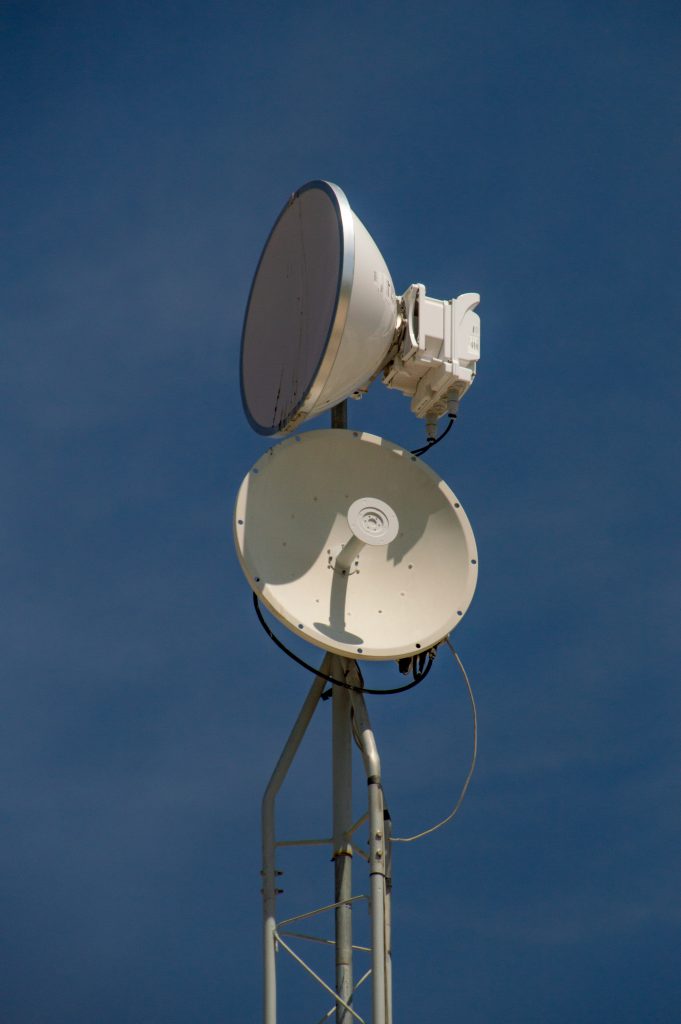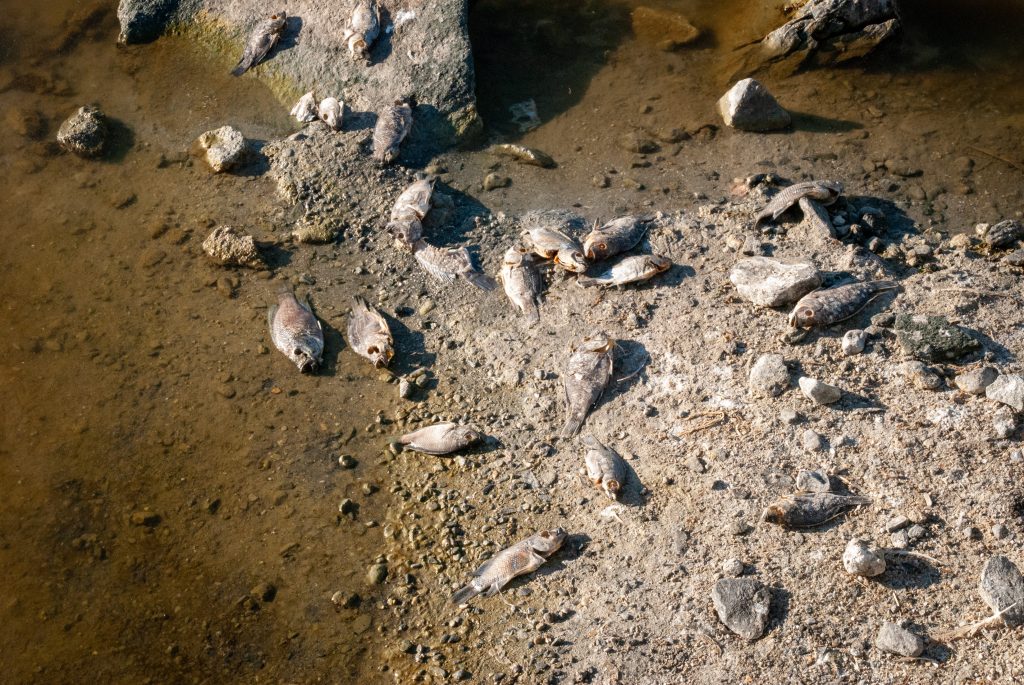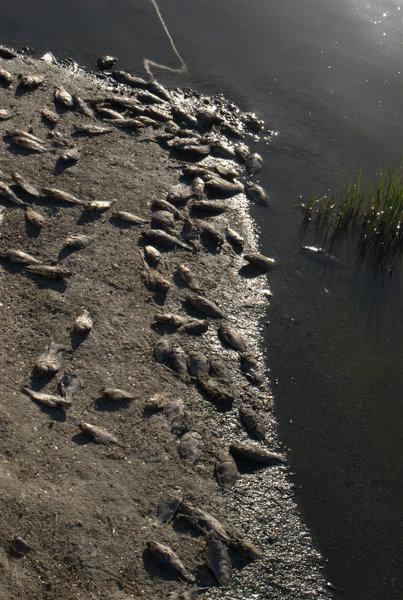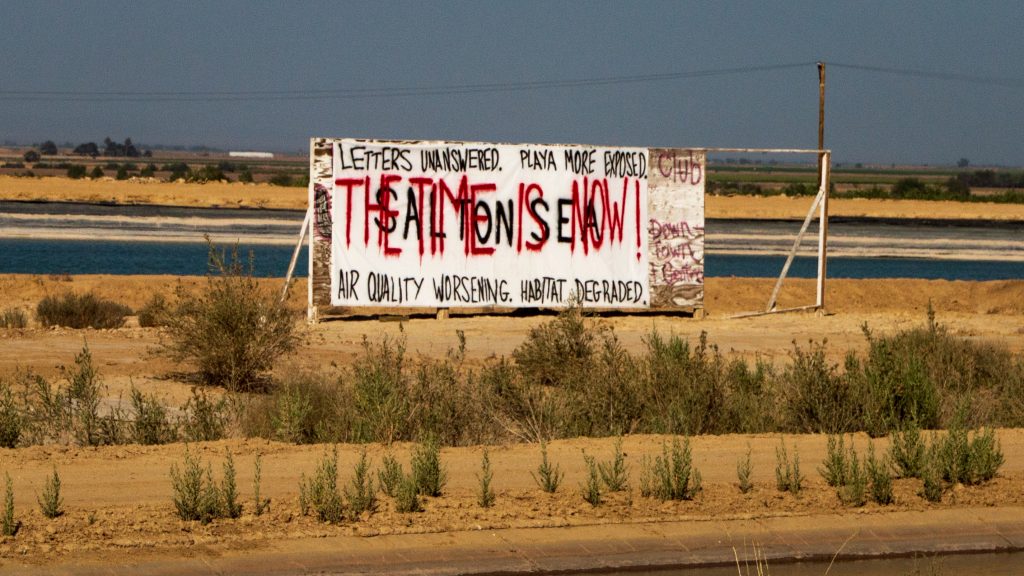
The Drying Salton Sea
“Every time the breeze comes I know, it’s going to trigger his asthma,” Ana Barajas says about her 8 year old son, Jesse. The Salton Sea, an inland ocean of extreme saltiness and stark desolation, is known for its rotten egg smell of sulfur dioxide and ammonia emitted from the countless fish that die each day. Although this sounds harrowing, the biggest threat to the people who live near the Salton Sea is the dust. The Salton Sea is drying as Colorado River water is being diverted from farmers’ fields to urban areas such as San Diego because of an agreement between Imperial Irrigation District (IID) and the State of California known as the Quantification Settlement Agreement1. The agreement transfers water from IID to Metropolitan Water District, Coachella Valley Water District, and the San Diego County Water Authority to resolve disputes regarding use and conservation of Colorado River Water. The reduced inflows threaten the future of tens of thousands of agricultural jobs in the Imperial Valley2, and threaten the environment and local species as sediments are exposed. As of September 2023, the Sea’s surface is 11.8 feet lower than it was in 20033. 18,590 acres, or 29 square miles, of the fine silts of the playa are now exposed4, leaving this dust to blow in the intense desert winds. As it blows through the Imperial Valley, the playa dust joins dust from dirt roads5, the smoke and ash of approximately 28,000 acres of burned agricultural fields6, and tons of factory emissions7.
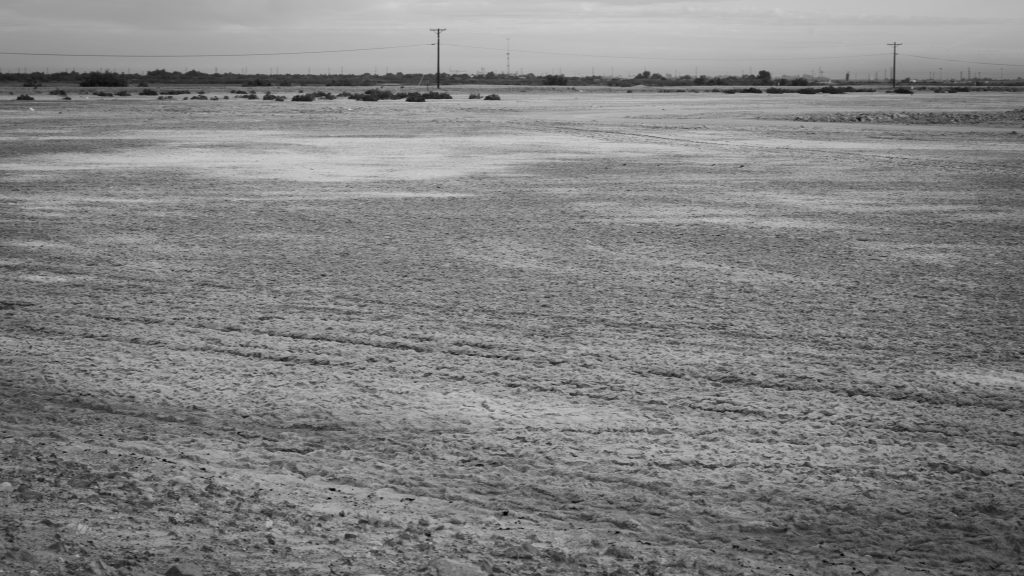
On top of these pollutants are the emissions from 8 million vehicles a year, each waiting from 45 minutes to 2 hours to cross the border between Mexicali and Calexico5. The combination creates some of the unhealthiest air in the country8. The tiny particulate matter scars the lungs, and is associated with respiratory disease, asthma attacks, heart attacks, and premature mortality6. One in three people in nearby Brawley, Calipatria, and Westmorland have asthma whereas only one in ten have asthma statewide9.
Ana lives in Calipatria, where she is raising her children, and spends a lot of time volunteering in the community. Ana’s son, Jesse, has chronic severe asthma. A simple cold will trigger his asthma, and become a full blown asthma attack. Caring for him when he is so needy and helpless makes her feel like a new mom all over again—but instead of preparing a bottle, she’s preparing a nebulizing treatment every two hours. Jesse has autism and ADHD, so he goes into a panic when he can’t breathe, which makes the attack worse.
“I’ve heard it’s a life threatening thing, you know, disease, and it’s not easy watching your child gasp for air, and there’s nothing you can do. You’re doing the best you can with medication,” she says. About a year ago she noticed that Jesse’s cough, and her own, sound very similar to a patient with emphysema.
She asked, “Our coughs sound very similar to a patient with emphysema… can we develop that just by having asthma?”
The answer was frightening- “And the doctor said yes, so I don’t know what my son’s future looks like.”
“And we do not smoke. Any allergy, allergic thing, will trigger his asthma. Even if he’s allergic to food it will trigger his asthma. He likes to run and jump a lot, and he will trigger his own asthma.”
The Imperial Valley has one of the nation’s highest rates of asthma related hospitalizations and emergency room visits for children, double California’s average10. Bronchitis is common, and many residents experience excessive coughing, wheezing, and shortness of breath9. These conditions have led the Department of Public Health to estimate that anywhere from 2 to 23 percent of children in Imperial County have asthma that is going undiagnosed and untreated5. It is deadly and expensive. There are almost twice as many hospitalizations from heart attacks in Imperial County than in neighboring San Diego County due to the strain poor air quality puts on people’s hearts13. The area consistently ranks in the worst three counties statewide for hospitalizations due to heart attacks6.
The Origin of the Salton Sea
The Imperial Valley is known as the nation’s winter salad bowl, as high year-round temperatures join with water imported from the Colorado River to allow summer crops to flourish all winter long. The valley produces over $2 billion worth of cattle, alfalfa, lettuce, broccoli, carrots, and other crops each year14. The water used on fields drains to the Salton Sea then fills the Salton Basin, which is so deep that the sea’s surface is 240.65 feet below sea level3.
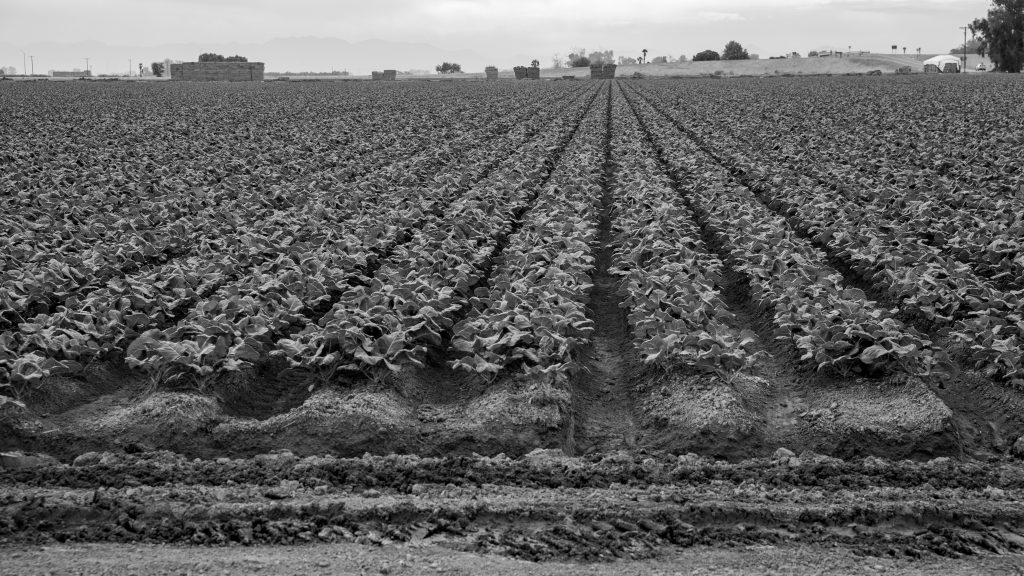
This is where the narrative surrounding the Salton Sea usually ends. Many people erroneously believe that the Salton Sea is a poisonous, man-made lake with no place in the desert—but it is really the latest iteration of Ancient Lake Cahuilla, which has episodically filled the area for the last 11,000 years15. A look west to the Santa Rosa Mountains reveals a bathtub ring, a line of salts left from when Lake Cahuilla was almost three hundred feet deeper than it is today. Stone fish traps, made by Native Americans who lived on Lake Cahuilla’s shores, lie on the banks at a level where fish once swam16. The Salton Basin was filled 8 times in the 19th century, most recently in 1896. Today’s iteration began in 1901 when water from the Colorado River flowed through the newly built Alamo Canal, watered the Imperial Valley’s fields, and drained to the bottom of the basin. It grew larger in 1905, when the Colorado River flooded and broke through the canals that were being built to irrigate the Imperial Valley15. The flood was large enough that it would likely have filled the Salton Basin with or without the canals15.
The Salton Sea is one of the last remaining wetland areas left to provide water, food, and a resting place for the over 400 species of birds who stop there on their long migration along the Pacific Flyway17, as the USDA incentivized farmers to drain wetlands throughout the 1800s and 1900s, resulting in a 91% loss of the priceless ecosystem that once covered California’s coast17, 18. Therefore, the Salton Sea is a priceless wetland that provides multiple habitats for many species, and provides vital drainage for the region’s huge agricultural industry. It has recently been the second most avian-diverse region in North America, after only the Everglades19.
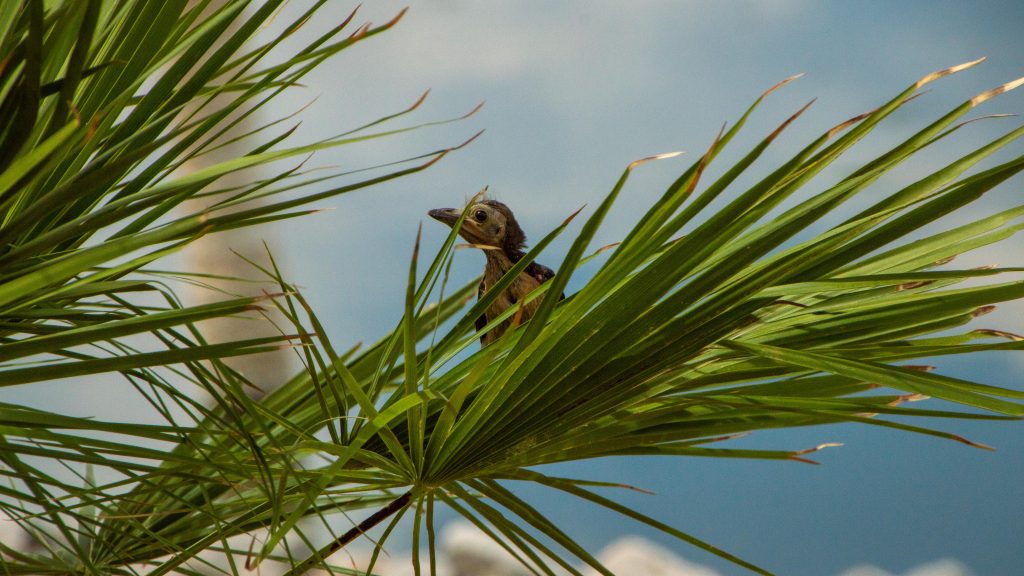
The Salton Sea has 1,400 campsites, and offers fishing, boating, artistic and recreation activities for countless families15. In the 1960s and 70s, it got more visitors than Yosemite20. Celebrities such as The Rat Pack, the Marx Brothers, Sonny Bono, and the Beach Boys would come to sit on its shores21. Today, the sea is mostly devoid of guests, seeing just a few artists and bird watchers, unlike the huge crowds of years past. Former beachside real estate decays far from the retreating shoreline, while people in the surrounding communities breathe the sea’s sulfurous fumes and die from its dust.
Rotting algae depletes the water of oxygen, which consequently causes massive fish die offs. A walk on Barnacle Beach is a trek over millions of shells from barnacles that could not survive the low oxygen levels22. Most harmful of all, the sea is being allowed to dry, as municipalities up and down the Colorado River demand more water. The sea’s water gets saltier every year, as more salt enters but only the water evaporates out. The beach was once covered in tilapia carcasses. They were the last species to survive19 because they incubate their eggs in their mouths, which kept them safe from the desiccating water23, but since 2019 even tilapia have not been found24, 25. As if the rotting fish and algae weren’t enough, local geothermal plants and agriculture further contribute to malodors around the Salton Sea26.
Today, 90% of the inflow is runoff flowing in from the New, Alamo, and Whitewater Rivers20. The New River flows north from Mexicali. It is not fed by any natural water source other than a tiny amount of rain. Instead, it is a channel that brings in: urban runoff; raw sewage; discharge from wastewater treatment plants, geothermal plants, and slaughterhouses; industrial pollutants; and agricultural runoff from crops and confined animal feeding operations26. The Alamo River contributes 50% of the Sea’s inflows, bringing agricultural drainage, surface runoff, municipal waste, and industrial effluent from further east in the Imperial Valley27. The Whitewater River adds stormwater runoff, Colorado River water, and agricultural drainage from the neighboring Coachella Valley28. The remaining inflows to the river come from a small amount of groundwater, and rain that averages less than 3 inches per year.

Why does the Salton Sea Smell?
Eutrophication
The water that flows in from the agricultural fields is rich in nitrogen and phosphorus20, two of the main components in fertilizer. The nutrients fertilize the algae in the sea, which eventually dies and sinks to the bottom, where oxygen consuming aerobic bacteria digest it. So much algae sinks that the aerobic bacteria deplete oxygen from the water, and don’t leave enough for the fish who live in it. As a result, the fish die and sink to the bottom as well, causing the aerobic bacteria to use so much oxygen that they too run out and die along with the fish. Then anaerobic bacteria, which do not require oxygen but release nasty byproducts, take over. As they consume the detritus, they release hydrogen sulfide and ammonia that smell like rotten eggs22. The anaerobic bacteria live at the bottom of the sea, far from the oxygenated surface, so the gasses are normally kept away from the fish by thermal stratification. However, when strong desert winds mix the layers, the gasses mix with higher layers, poison the fish, and cause massive die-offs20. The sulfurous odor can reach as far as Palmdale and Lancaster, 150 miles away22, 29. When the sea was full of tilapia, boats skimmed the water to remove the blanket of dead fish every morning in an endless attempt to control odors and prevent the eutrophication from getting worse.
Why is the Salton Sea Getting Saltier?
Accumulating salinity is damaging the health of the Salton Sea. Water from the Colorado River is naturally salty, so farmers have to over-irrigate their land to flush salt from their crops19. The water flows over the fields, dissolves the salts, and drains into tiling, special pipes with holes in them, which were constructed by the Bureau of Reclamation to carry the used water to the sea. Between the irrigation waste and the natural erosion of salts from the canyons of the Colorado River, 4 million tons of additional salt flow in each year20. As water evaporates out it leaves the accumulated salts behind, making the sea more and more saline. It is now one third saltier than the ocean22. At the salinity levels before 2019, it supported tilapia, pileworms, barnacles, brine shrimp, flies, algae, bacteria and the birds that come to roost, but the salinity has gotten too high to support tilapia anymore. There may still be a few tilapia and native, salt tolerant pupfish near the fresher water inlets into the sea25, but the numbers seem to be extremely low. Fish eating birds that feed upon them have lost their food source. Some of these birds will be able to find alternative places to land, but some species may seriously decline due to ecosystem collapse22, 32. Today, only plant eating avian species find food and rest at the Salton Sea.
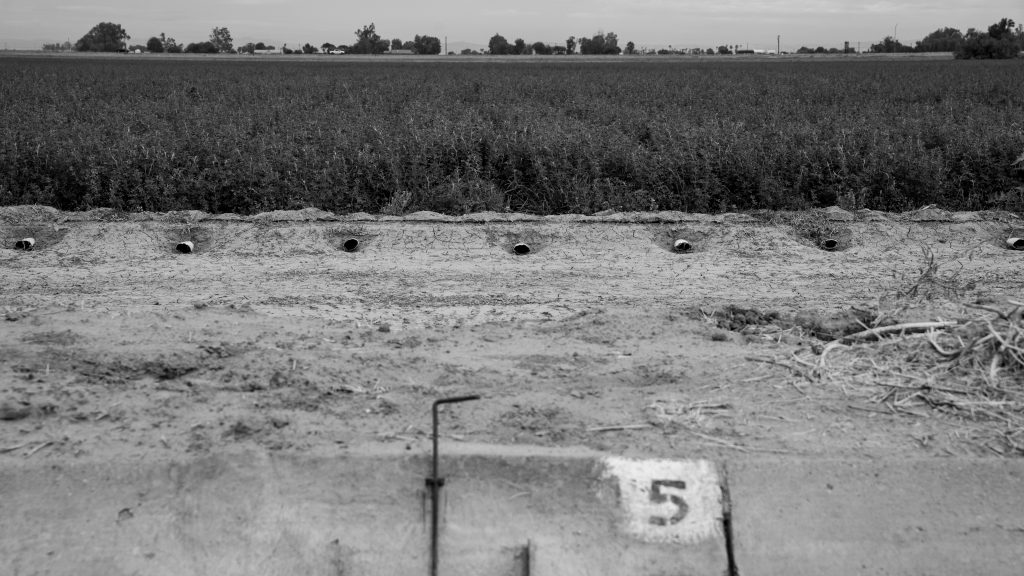
Poverty
It is no coincidence that Imperial is one of the state’s poorest counties10. 19.3% of county residents are unemployed11, and 17.3% live in poverty12, rates among the highest in the nation. Although 84% of Imperial County residents are Latino6, they, along with Indigenous Peoples, have been denied the opportunity to help make decisions about the region’s management32.
Solutions
Despite the magnitude of the challenges, the people of Imperial County have come together to create solutions. Jackie Riddell, who has two children with autism, found her children too often excluded from community activities, so she created Best S.T.E.P. Forward, which stands for Sports, Theater, Expression, and Perseverance. It is an inclusive organization that offers an impressive array of activities for children with special needs, including formal dances, drumming lessons with Ricky Falomir of the Aquabats, and even a trip to Disneyland.
Jackie’s children also suffer from respiratory problems. Standing in the group’s organic garden on a warm October morning, she said, “My daughter Zoe has had a really rough two weeks. You see this breeze, it feels good right now, right? This breeze comes with the territory of really bad air quality.” She explains that it brings in the pesticides, the dust from the Salton Sea, dust from a local cattle operation, and the polluted air from Mexicali.
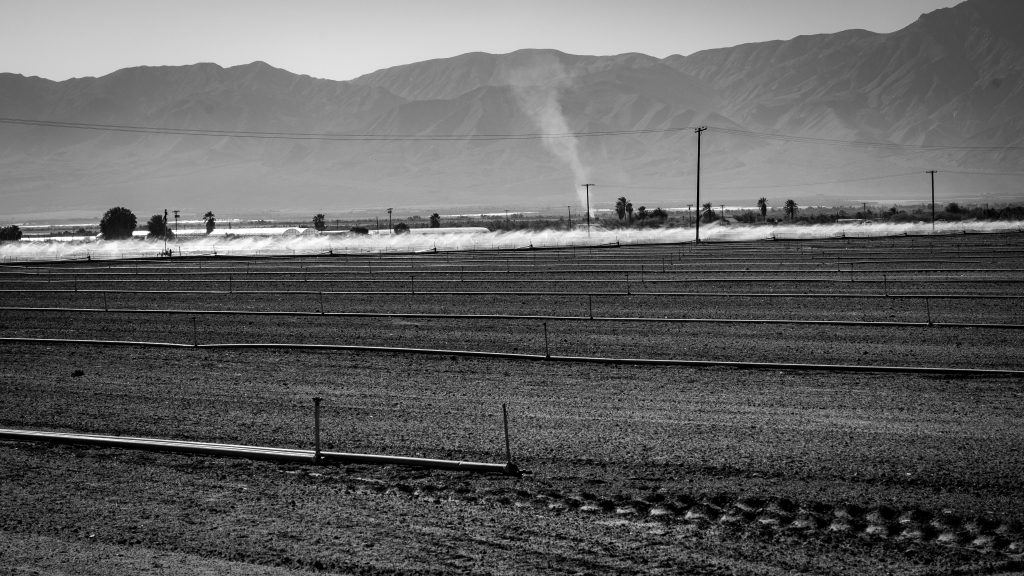
“It’s not just asthma, it triggers allergies as well,” she says. “I’m no doctor, I’m no scientist, but it’s pretty ‘Captain Obvious’ if you ask me. It is a product of our surroundings, and it’s tough because I really like Imperial County, but it comes down to quality of life. Do I really want my kids to have to grow up and depend on medications to physically feel good? Because it’s a lousy feeling when you feel like that.” She worries, “We’re all going to have smokers’ lungs without smoking. That’s the reality of things. Our lungs are so already damaged, and then you start adding all these other things they’re going to be building up.”
Local residents are fighting to take charge of environmental issues as well. The Comite Civico del Valle (CCV) is the most influential environmental justice group in the region. With Executive Director Luis Olmedo at the helm, the group creates vital community, government, and academic partnerships. It fosters civic engagement through outreach events, educator training, environmental health research, an annual leadership summit, and the work of trusted community health workers, called promotoras33. The CCV set up a network of 40 air monitors throughout Imperial County, named IVAN, for Identifying Violations Affecting Neighborhoods, which measures particulate matter levels at a neighborhood level and shares the data with the community34. The monitors quickly exposed a disparity within the state data, as state monitors are far more dispersed, and were capped at a pollution reading level just half as high as the spikes. The inadequate equipment likely means that the state had been underreporting high pollution spikes for years. The community monitors measure air quality issues at a finer scale than the five county monitors can6, 35, and allow residents to see current conditions neighborhood by neighborhood. The network enables communities to determine when to stay indoors, and to address the sources of pollution more precisely.
Despite these measures, people in the region still need a huge reduction in pollutants. The CCV is fighting to ensure that the most pressing problems are addressed during the slow implementation of the long-planned, long-debated, and long-forestalled Salton Sea Management Program, which is supposed to reduce salinity, create habitat, and reduce dust from the sea36. Jackie knows the solution, “Love your neighbor. We could totally use outside support in any way shape or form. It doesn’t have to be funding or money, just that support. Look out for one another because, at the end of the day, we’re all just under one big giant sky, so let’s just take care of one another. That’s all I could ask.”
She says, “Take care of what you live in because you only have one giant home that you share with everybody so that’s what it’s about – creating that awareness and hope.”
Learn more about The New River
Learn More
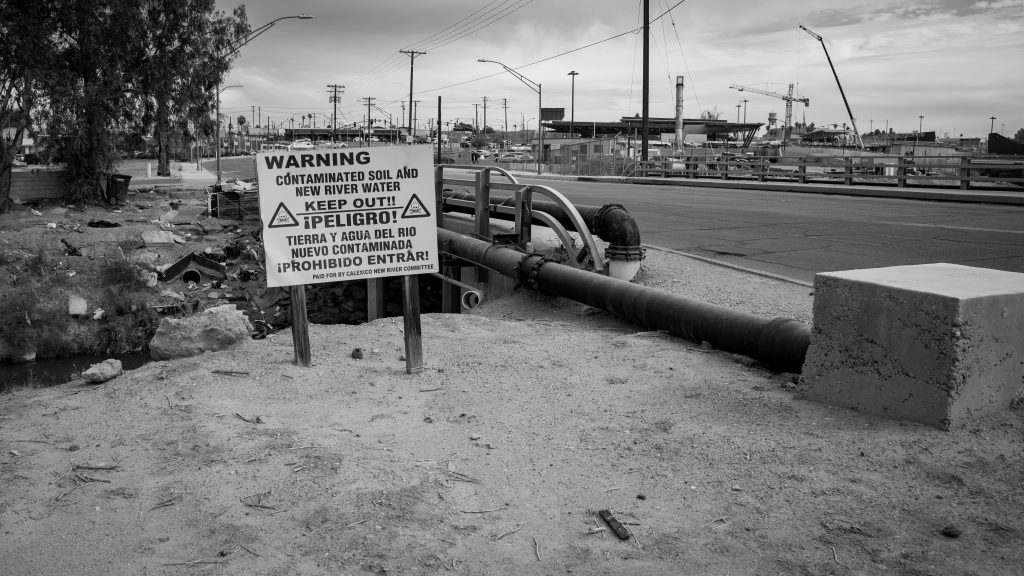
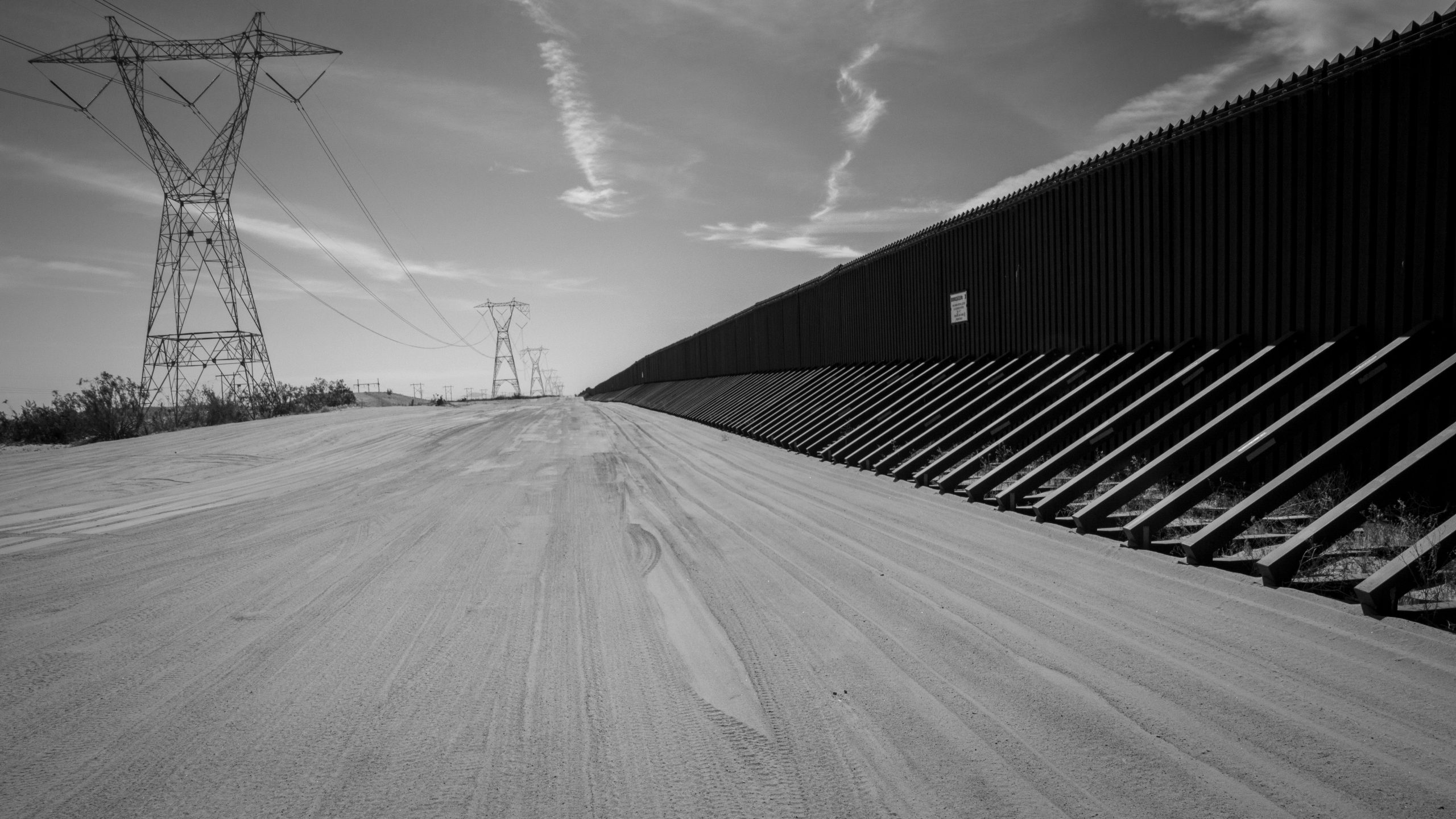
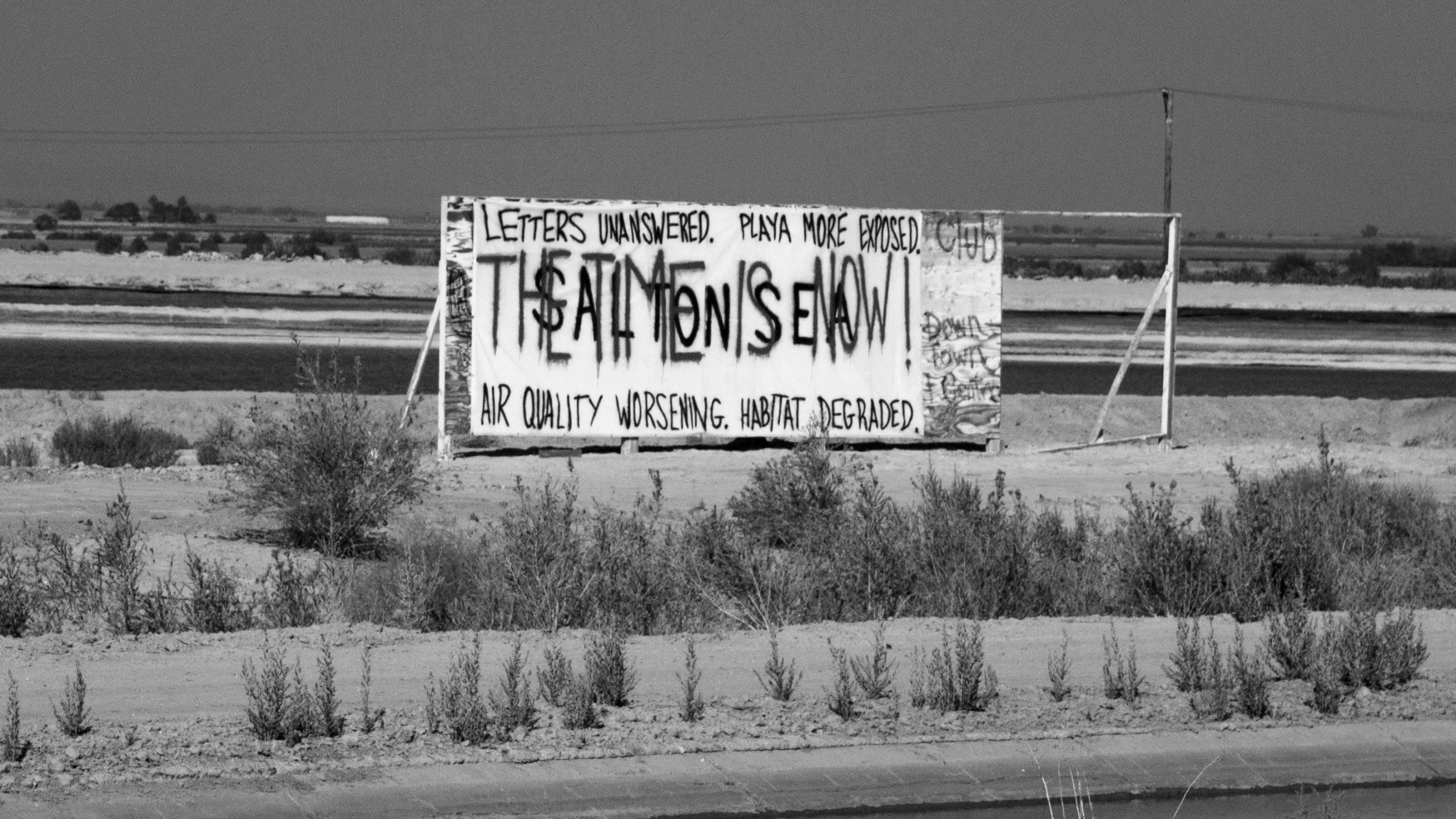

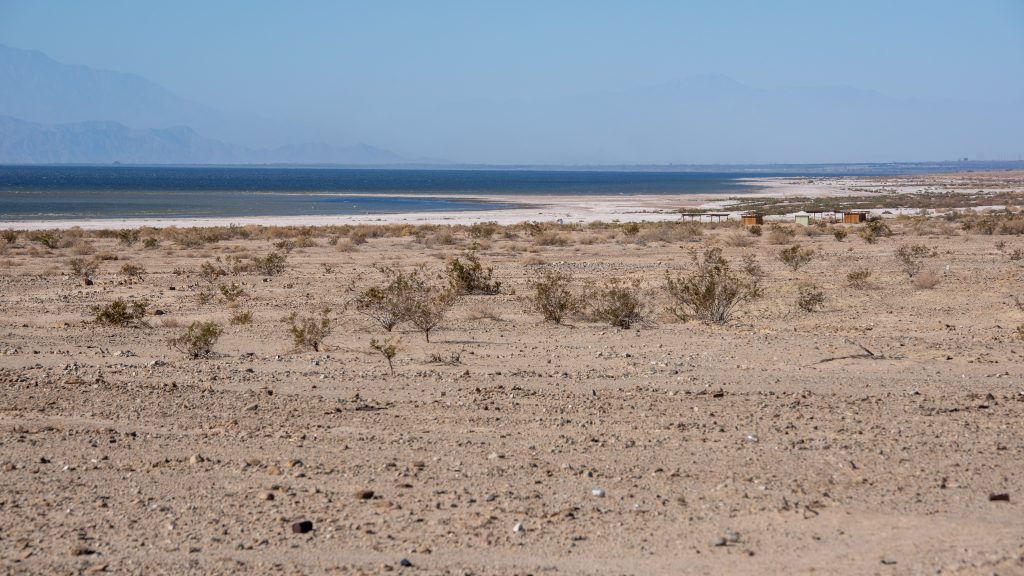
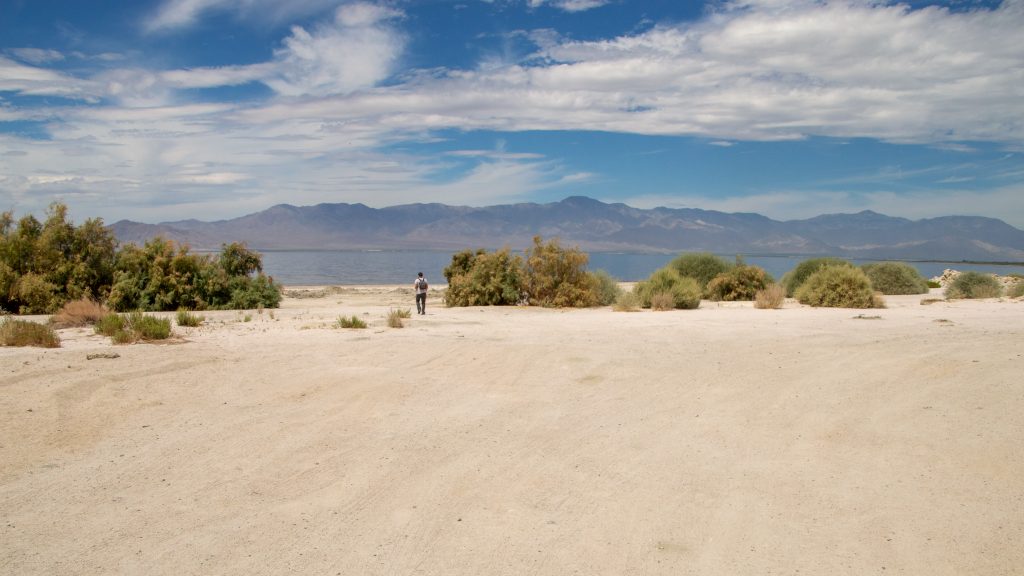
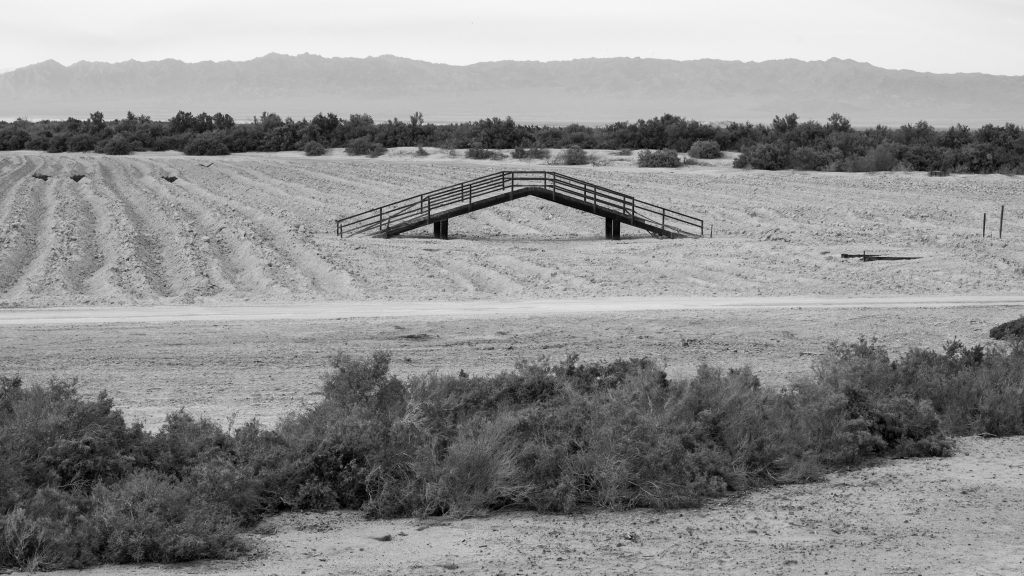
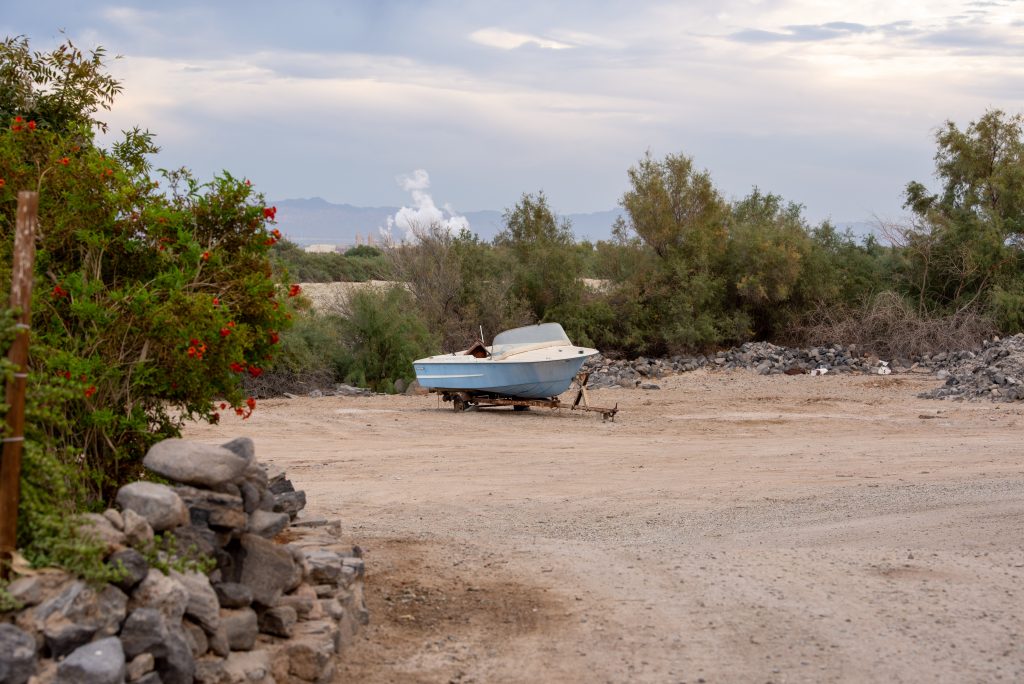
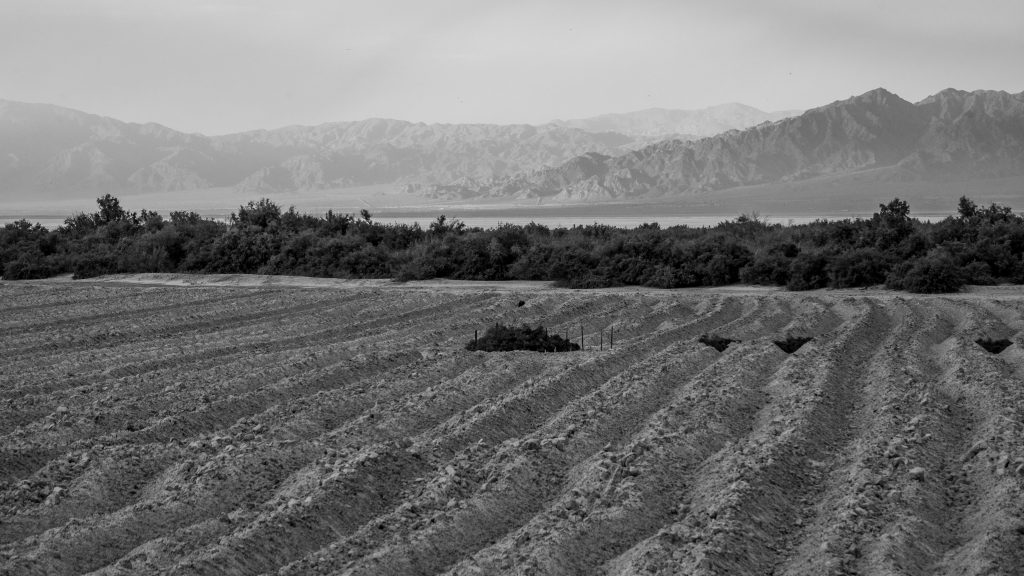
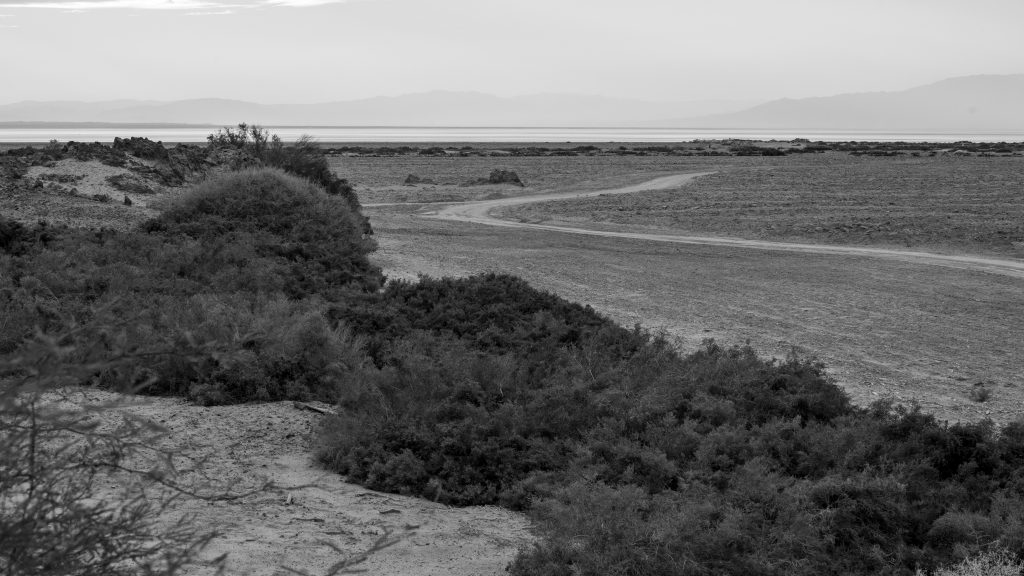
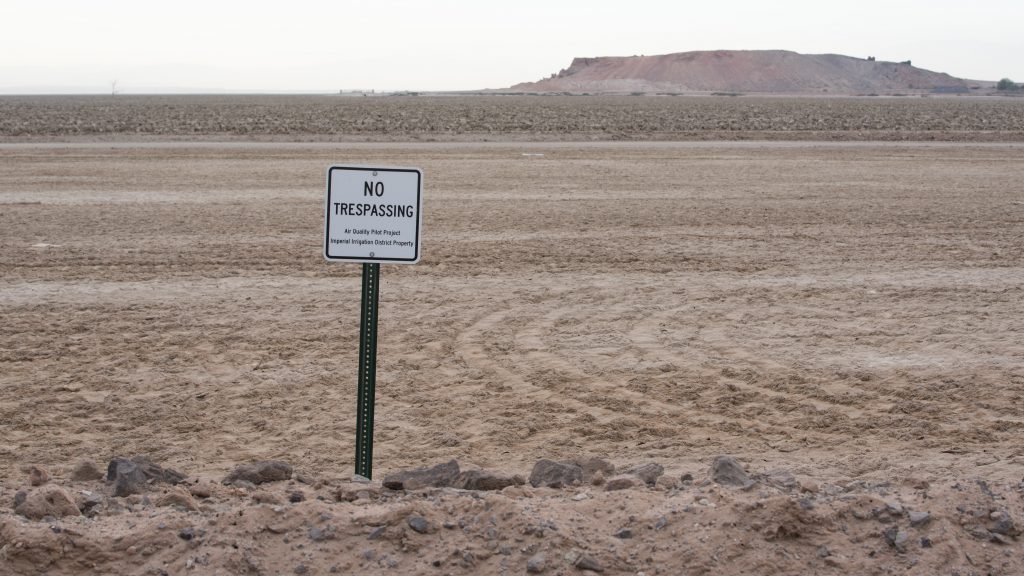
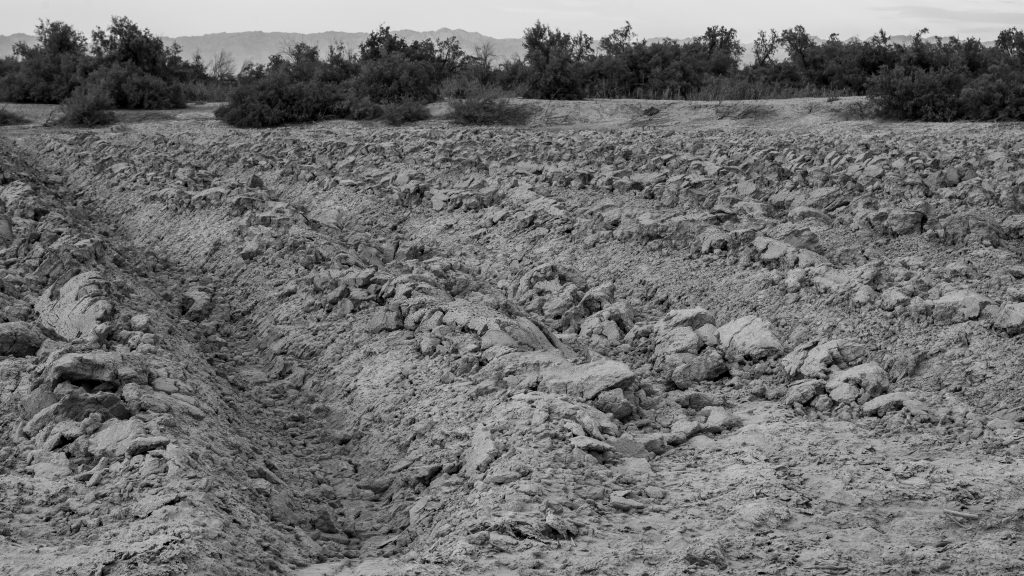
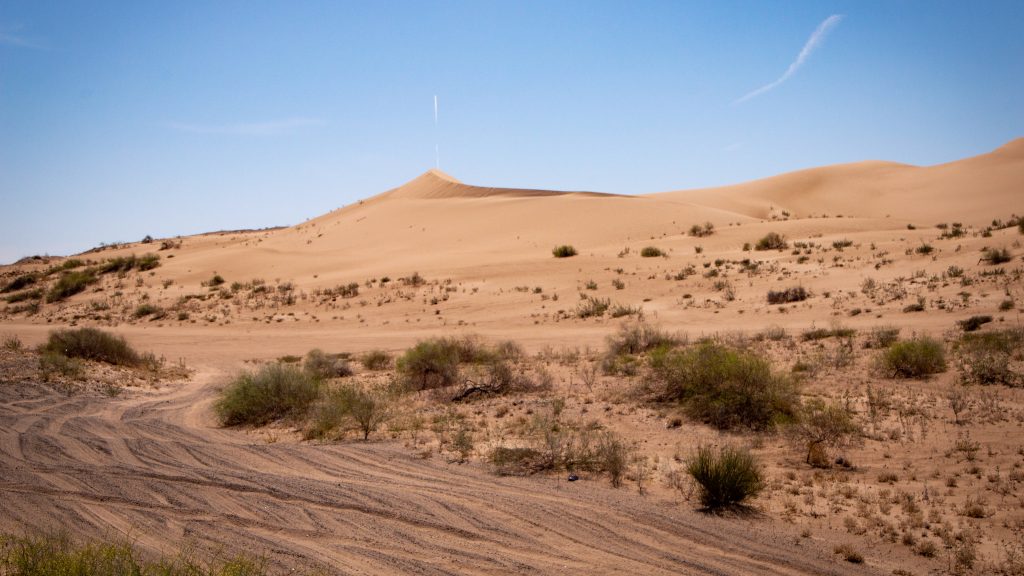
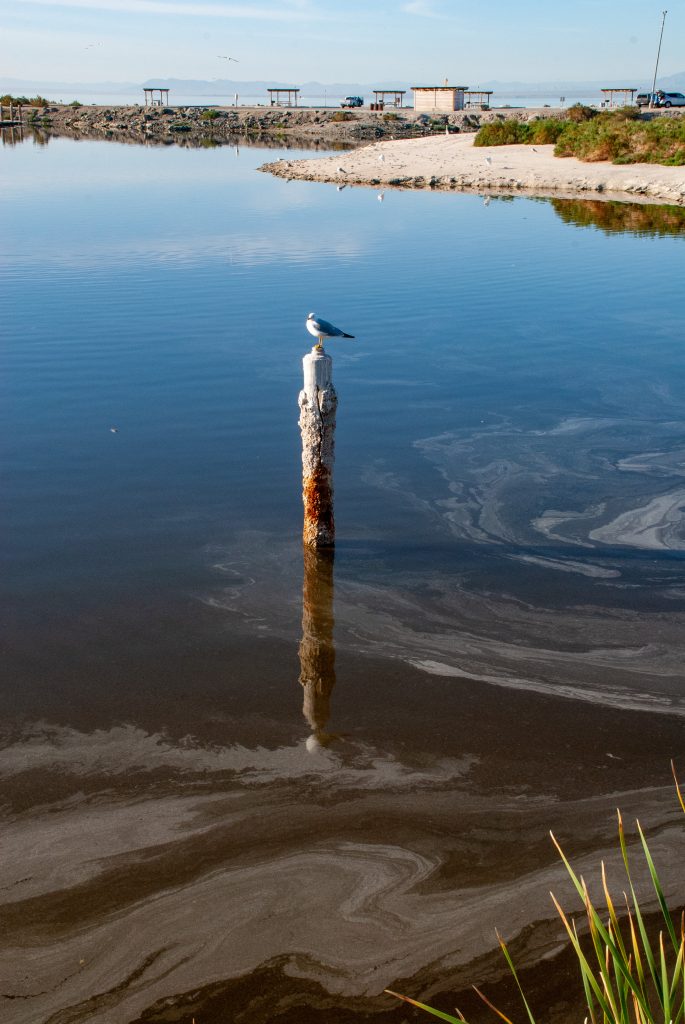
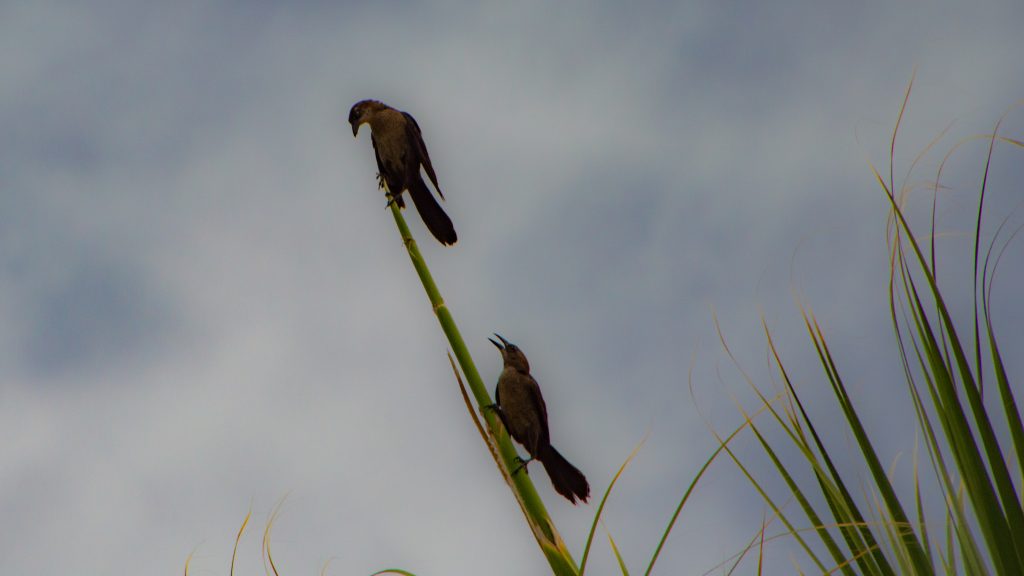
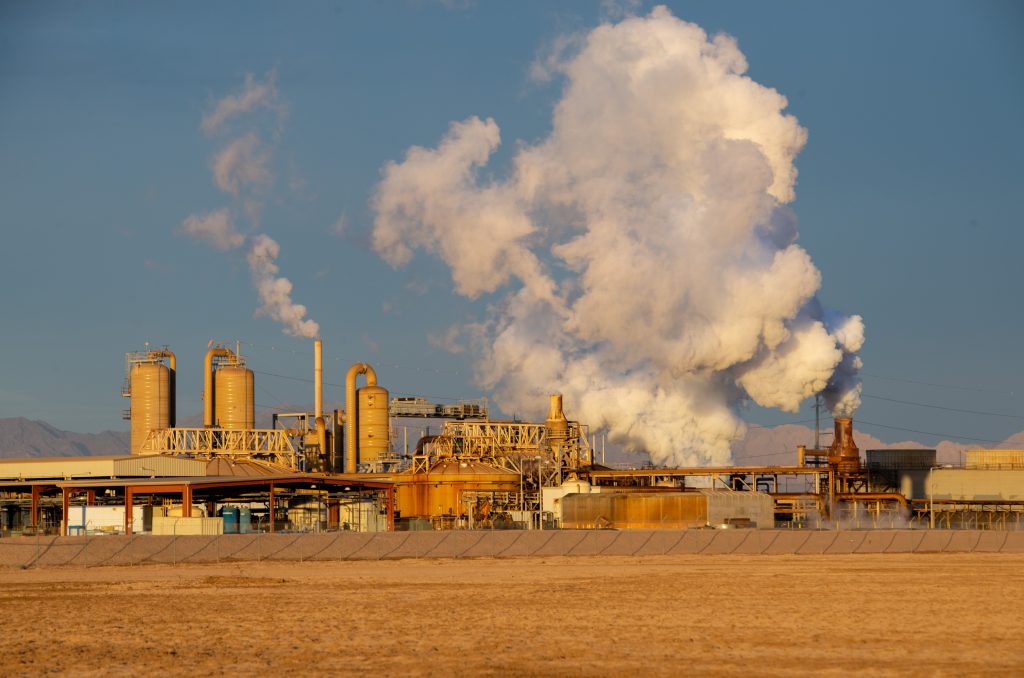
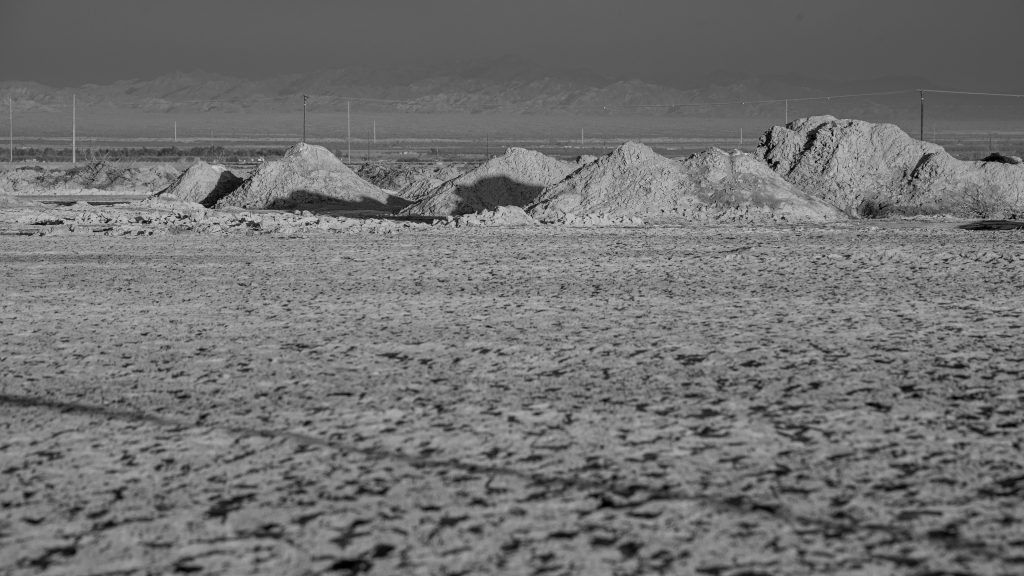
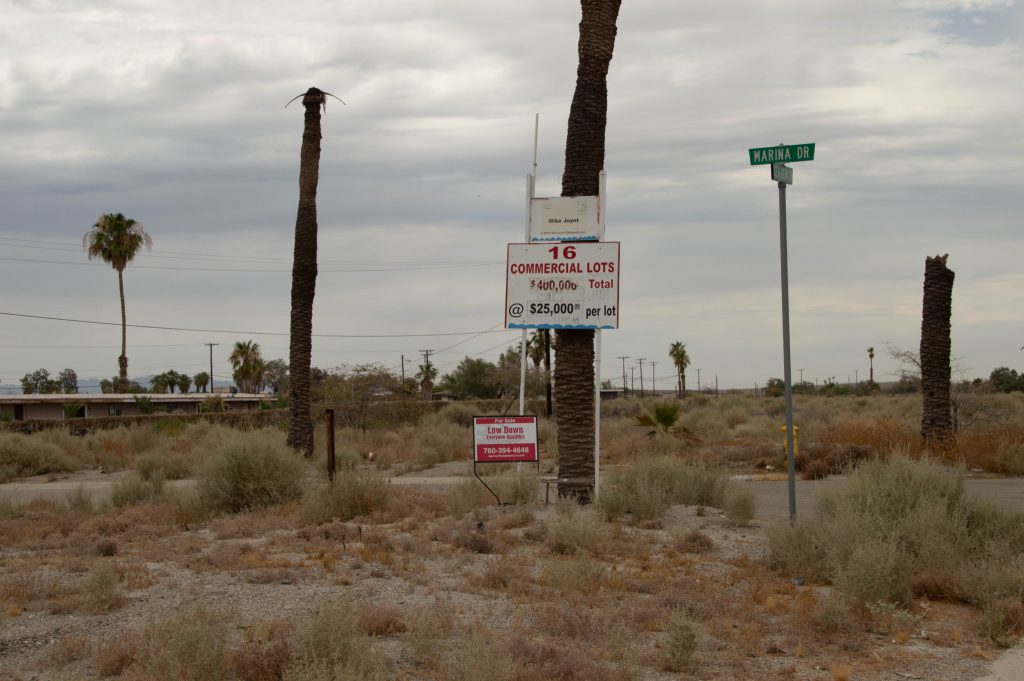
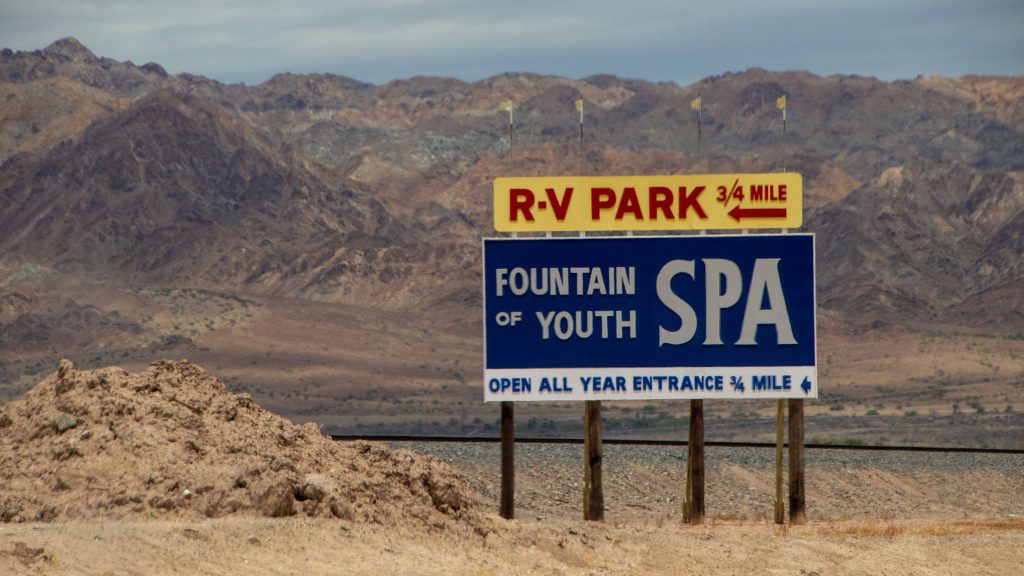
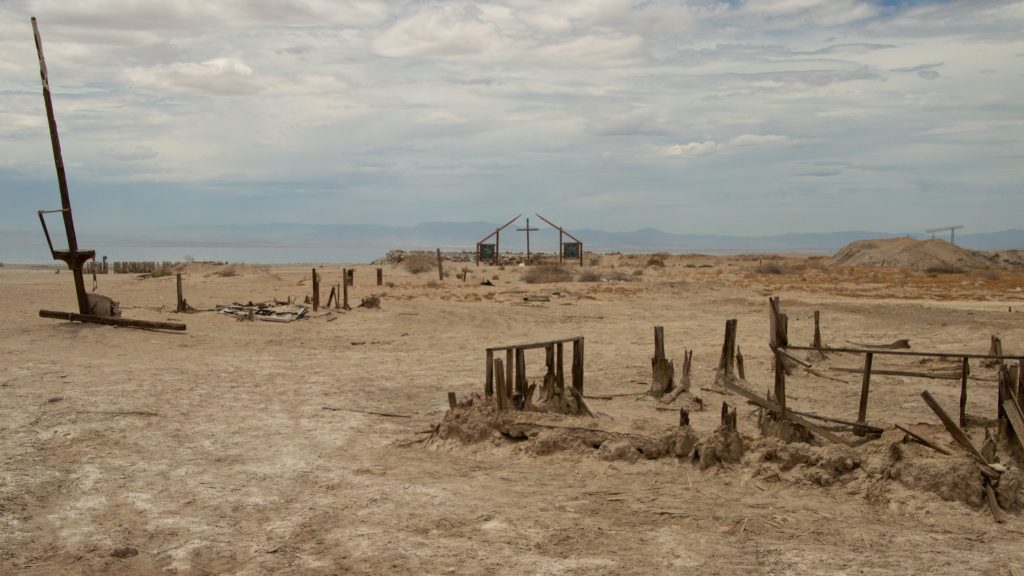
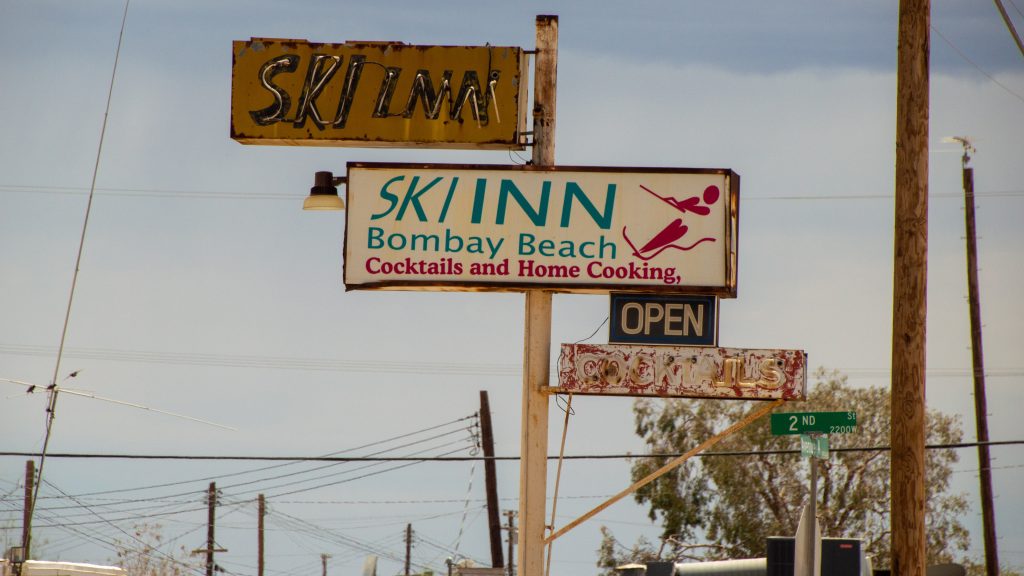
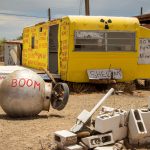
1. “QSA – Water Transfer.” Imperial Irrigation District, 2024. https://www.iid.com/water/library/qsa-water-transfer
2. KYMA News Team. “EXCLUSIVE: Farmers and IID fight for water rights.” KYMA, April 26, 2019. https://kyma.com/news/2019/04/26/exclusive-farmers-and-iid-fight-for-water-rights/
3. “Current Information on the Salton Sea.” Pacific Institute, December 18, 2021. https://pacinst.org/current-information-salton-sea/.
4. “The Salton Sea Playa: Understanding Air Quality at the Salton Sea.” Imperial Irrigation District, 2019. https://www.iid.com/home/showdocument?id=1529.
5. Brown, Patricia Leigh. “The Air Is Dark and Asthma Is Deadly Along the Mexico Border.” Reveal. The Center for Investigative Reporting, April 12, 2021. https://www.revealnews.org/article/the-air-is-dark-and-asthma-is-deadly-along-the-mexico-border/.
6. Wong, Michelle, Esther Bejarano, Graeme Carvlin, Katie Fellows, Galatea King, Humberto Lugo, Michael Jerrett, et al. “Combining Community Engagement and Scientific Approaches in next-Generation Monitor Siting: The Case of the Imperial County Community Air Network.” International Journal of Environmental Research and Public Health 15, no. 3 (2018): 523. https://doi.org/10.3390/ijerph15030523.
7. “Clean Air Act Section 179B Technical Demonstration Imperial Valley PM2.5 Nonattainment Area.” California Air Resources Board, January 5, 2018. https://ww3.arb.ca.gov/planning/sip/planarea/imperial/final179bwoe.pdf § (2018).
8. Working Group Draft Imperial County – Mexicali Air Quality Work Plan to Improve Air Quality in the Border Region § (2018). https://ww3.arb.ca.gov/planning/border/workplan.pdf.
9. Lindberg, Eric. “As Salton Sea Shrinks, Experts Fear Far-Reaching Health Consequences.” USC News, August 28, 2019. https://news.usc.edu/159380/salton-sea-shrinking-asthma-respiratory-health-air-quality/.
10. Aguilera, Elizabeth. “What Keeps Families in One of the Most Polluted Places in California?” CalMatters, January 23, 2019. https://calmatters.org/health/2019/01/what-keeps-families-in-one-of-the-most-polluted-places-in-california/.
11. “Imperial County Profile”. Emloyment Development Department, State of California, 2023. https://labormarketinfo.edd.ca.gov/cgi/dataBrowsing/localAreaProfileQSResults.asp?state=true&selectedarea=Imperial%20County%20%20%20%20%20%20%20%20%20%20%20%20%20%20%20%20%20%20%20%20%20%20%20%20%20%20%20%20%20%20%20%20%20%20%20%20%20%20%20%20%20%20%20%20%20&menuChoice=localAreaPro&geogArea=0604000025.
12. “Quick Facts- Imperial County, California”. United States Census Bureau, 2023. https://www.census.gov/quickfacts/fact/table/imperialcountycalifornia/PST045222.
13. Assessment of Environmental Health Data in the California – Baja California Border Region § (2015). https://19january2017snapshot.epa.gov/sites/production/files/2015-10/documents/cehtp_border_report_final_aug2015.pdf.
14. Sealer of Weights and Measures, and Carlos Ortiz, Imperial County Agricultural Crop & Livestock Report § (n.d.). https://agcom.imperialcounty.org/wp-content/uploads/2020/12/2019-Crop-Report.pdf.
15. Miller, David M., ed. “The 2020 Desert Symposium.” In Changing Facies. Desert Symposium, Inc., 2020. http://www.desertsymposium.org/DS%202020%20Changing%20Facies%20for%20web%204.pdf.
16. White, Eric S., and Barbara J. Roth. Rep. Fish Traps on Ancient Shores: Exploring the Function of Lake Cahuilla Fish Traps. University of California, 2009. https://escholarship.org/uc/item/1hk9f8px.
17. Salton Sea Atlas. Redlands, CA: ESRI, 2002.
18. Economic Research Service, Wetlands and Agriculture: Private Interests and Public Benefits § (n.d.). https://www.ers.usda.gov/webdocs/publications/40845/32656_aer765f_002.pdf?v=0.
19. “F.A.Q.” The Salton Sea Authority, 2017. https://saltonsea.com/about/faq/.
20. Janik, Kevin P. “Inflows and the Restoration of the Salton Sea.” Thesis, University of Montana, 2005. https://scholarworks.umt.edu/cgi/viewcontent.cgi?article=7967&context=etd.
21. Nielsen, John. “’Farm To City’ Deal To Dry Out Stretches Of California’s Legendary Salton Sea.” Broadcast. Morning Edition. Pasadena, CA: KPCC, December 29, 2017. https://www.npr.org/2017/12/29/574479320/californias-shrinking-salton-sea.
22. Cohen, Michael J., and Karen H. Hyun. Publication. Hazard- The Future of the Salton Sea With No Restoration Project. The Salton Sea Coalition, Imperial Visions, The U.S. Geological Survey Salton Sea Science Office, and the Compton Foundation, n.d. https://pacinst.org/wp-content/uploads/2013/02/report_lowres2.pdf
23. “California Fish Species.” California Fish Species – California Fish Website. University of California Agriculture and Natural Resources, 2021. https://calfish.ucdavis.edu/species/?uid=56&ds=241.
24. Wilson, Janet. “Fish and the birds that fed on them wiped out this winter.” Desert Sun, February 8, 2019. https://www.desertsun.com/story/news/2019/02/08/salton-sea-california-fish-bird-die-off-winter/2818025002/.
25. Ruiz, Frank. Personal communication, August 21, 2023.
26. Setmire, Jim. “Eutrophication Workshop.” In Eutrophic Conditions at the Salton Sea. Riverside, CA, n.d. https://www.researchgate.net/publication/238067179_Eutrophic_Conditions_at_the_Salton_Sea.
27. Colorado River Regional Water Quality Control Board. “Introduction to the New River/Mexicali Sanitation Program.” New River Introduction |Colorado River Regional Water Quality Control Board. California Water Boards Colorado River – R7, September 24, 2020. https://www.waterboards.ca.gov/coloradoriver/water_issues/programs/new_river/nr_intro.html.
28. Surface Water Ambient Monitoring Program, and Mark J. Roberson, Assessment of Surface Water Quality data Collected from Fall 2009 through Fall 2013 by the Surface Water Ambient Monitoring Program- Colorado River Basin Region §. SWAMP-MR-RB7-2016-0006 (n.d.). https://www.waterboards.ca.gov/water_issues/programs/swamp/docs/reglrpts/r7_sw_assessment.pdf.
29. Salton Sea Funding and Feasibility Action Plan- Benchmark 2: Review and Update Existing Condition Data § (2016). https://saltonsea.com/wp-content/uploads/2018/06/SS-Benchmark-2-Review-Update-Existing-Condition-Data-5-6-2016.pdf.
30. Flaccus, Gillian. “Rotten Egg Smell: Is Salton Sea Source of California’s Big Stink?” The Christian Science Monitor. The Christian Science Monitor, September 11, 2012. https://www.csmonitor.com/Science/2012/0911/Rotten-egg-smell-Is-Salton-Sea-source-of-California-s-big-stink#:~:text=One%20reason%20for%20doubt%2C%20the,north%20of%20the%20Salton%20Sea.
31. “Background Information on the Salton Sea.” California Department of Fish and Wildlife. Accessed December 21, 2021. https://wildlife.ca.gov/Regions/6/Salton-Sea-Program/Background.
32. Landis, Ben Young. “A California Community Shows How Advancing Air Quality Takes Technology, Teamwork, and Time.” Thriving Earth Exchange. AGU, July 12, 2016. https://thrivingearthexchange.org/tex-stories/a-california-community-shows-how-advancing-air-quality-takes-technology-teamwork-and-time/.
33. “Welcome to Comite Civico Del Valle.” Who are we? Welcome to Comite Civico del Valle. Comite Civico del Valle, 2021. https://www.ccvhealth.org/about.php.
34. “Ivan Air Monitoring.” Ivan Imperial. Comite Civico del Valle, Inc., 2008. https://ivan-imperial.org/air.
35. “Working with Imperial County Communities to Monitor Air Quality.” Public Health Institute, 2019. https://www.phi.org/about/impacts/working-with-imperial-county-communities-to-monitor-air-quality/.
36. “Improving Conditions at California’s Salton Sea.” State of California Salton Sea Management Program. California Natural Resources Agency, 2021. https://saltonsea.ca.gov/.
